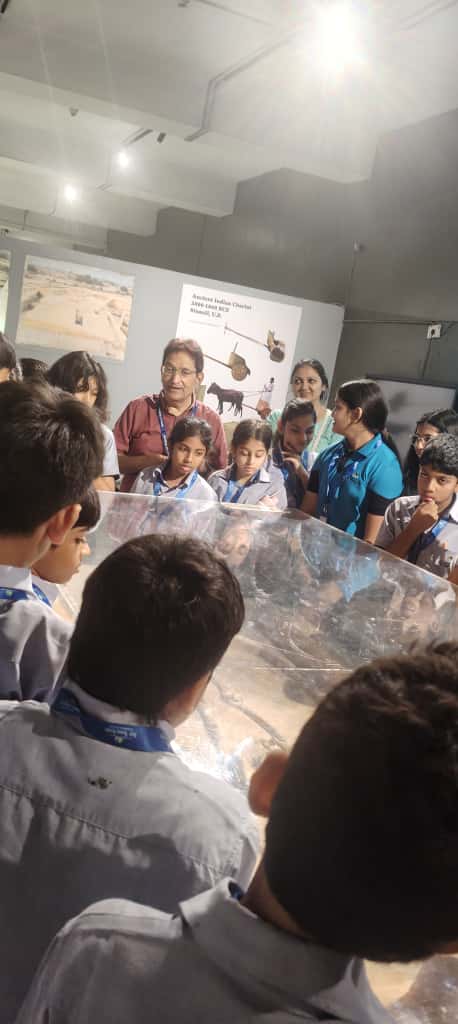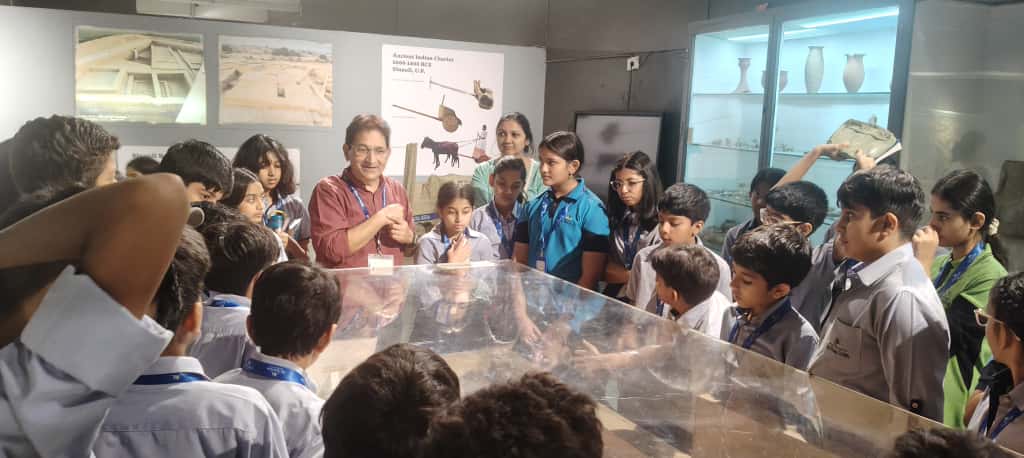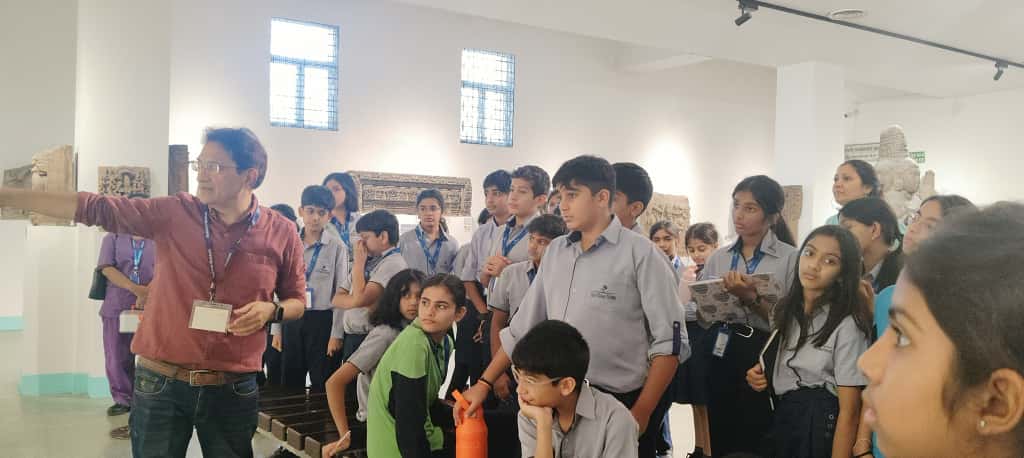Field Trip to the National Museum | Grade VI
The following is a description as shared by a student: Ms Guneev Bose, Grade 6 Sariska
Our recent visit to the National Museum was an unforgettable experience that brought our
classroom learning on the Indus Valley Civilization to life. As part of our Social Science curriculum, this educational trip helped us understand how one of the world’s earliest urban civilizations flourished thousands of years ago. Seeing the artefacts in person gave us a hands-on experience that no textbook could fully provide. It helped us elaborate more on our theme of
Indus Valley Civilization.
As we entered the gallery dedicated to the Indus Valley Civilization, our excitement grew. The display was filled with ancient pots, tools, ornaments, seals, and figurines that revealed how skilled and creative the people of that time were. The beautifully shaped pottery showed their talent in design and symmetry, while the seals with mysterious symbols reminded us of their yet-to-be-deciphered script. We were amazed to see the jewellery made from beads and semi-precious stones, reflecting their sense of style and craftsmanship. These items made us realise how advanced civilization was in trade, technology, and art. Besides this, we also got an opportunity to see different structures like ploughs, wheels and a cart from the people from the past.
Our tour guide played a very important role in making the visit meaningful. He patiently explained the use and importance of each artefact, helping us understand how these discoveries tell stories about the people who lived thousands of years ago. He answered all our curious questions—like how seals were used in trade, what tools were made of, and why civilization declined. His explanations helped us think critically about how historians and archaeologists reconstruct the past through material evidence.
Through this visit, we developed several important skills. Our observational skills improved as we carefully examined the details of each object. Our analytical and critical thinking skills were strengthened as we connected the artefacts to the concepts we had learned in class. We also practised collaboration and communication skills by discussing our observations and reflections with classmates.
Overall, the visit to the National Museum helped us appreciate the depth and richness of India’s cultural heritage. It was a truly inspiring and educational experience that made history come alive before our eyes. I returned with a greater curiosity about the past and a deeper respect for the people who shaped our civilization to what it is today.





